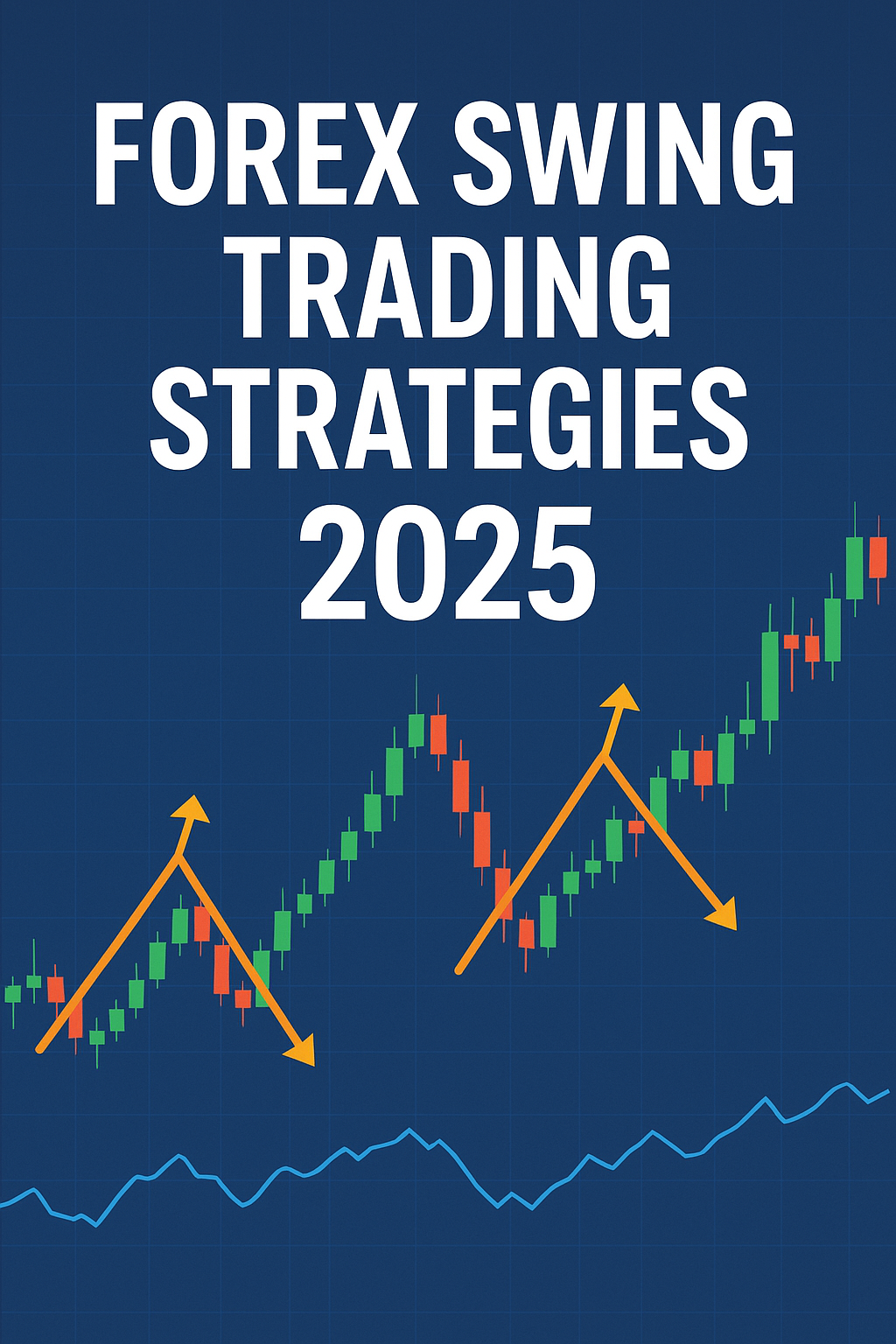Forex Swing Trading Strategies in 2025: How to Capture Big Market Moves

Introduction: Why Swing Trading Remains Popular in 2025
Forex trading comes in many styles—scalping, day trading, long-term investing—but swing trading continues to hold its place as one of the most effective approaches in 2025. Unlike scalpers who chase small moves in seconds or long-term traders who wait weeks, swing traders aim to capture larger market swings over hours or days. This makes it the perfect middle ground for those who want bigger profits with less screen time.
With AI-powered analysis tools, better trading platforms, and more brokers offering flexible leverage, swing trading is more accessible than ever. If you’re looking to trade without being glued to the charts 24/7, this strategy may be exactly what you need.
What is Swing Trading?
Swing trading is the practice of holding trades for several hours to several days, depending on how long it takes for the market to reach your target. Instead of aiming for a quick 5–10 pip profit, swing traders often target 50, 100, or even 300+ pip moves.
For example:
- A swing trader might buy EUR/USD after a breakout and hold the trade for three days until the trend peaks.
- Another may sell Gold after a resistance rejection and hold until price drops $50 over the next week.
The focus is on catching “swings” in market momentum rather than micro-movements.
Core Principles of Swing Trading
To be successful in swing trading, you need to combine technical and fundamental insights:
- Technical Analysis → Identifying support/resistance, chart patterns, and moving averages to time entries.
- Fundamental Drivers → Watching global events, economic data, and central bank decisions.
- Patience & Discipline → Avoiding the urge to close trades too early or chase false signals.
Swing traders don’t need to monitor every tick—but they do need to trust their analysis and give trades room to breathe.
Best Swing Trading Strategies in 2025
1. Moving Average Trend-Following
Use 50-day and 200-day EMAs to identify the bigger trend. Buy dips in an uptrend and sell rallies in a downtrend.
2. Fibonacci Retracement Swings
Identify high and low points on H4/Daily charts, then use Fibonacci retracement levels (38.2%, 50%, 61.8%) to catch price pullbacks before continuation.
3. Breakout and Pullback Trading
Wait for the market to break a key resistance or support level, then enter on the pullback for a safer swing entry.
4. RSI Divergence Strategy
When price forms higher highs but RSI shows lower highs (or vice versa), it signals a possible trend reversal—perfect for swing traders.
5. Multi-Timeframe Analysis
Confirm trades on larger timeframes (Daily, H4) and fine-tune entries on smaller ones (H1, M30). This reduces false signals and improves accuracy.
Best Pairs & Timeframes for Swing Trading
Not all pairs are ideal for swing trading. The best are those with strong volatility and clear trends:
- EUR/USD → High liquidity, stable moves.
- GBP/JPY → Large swings, perfect for trend-following.
- XAU/USD (Gold) → Strong trending behavior.
- Indices (US30, NAS100) → Excellent for capturing global risk sentiment.
Best Timeframes: H1, H4, Daily.
Tools & Indicators for Swing Traders
To succeed in 2025, swing traders rely on both traditional tools and modern AI-powered analysis:
- Trendlines & Chart Patterns → The basics of swing trading.
- Bollinger Bands → Identify volatility and breakout zones.
- Moving Averages (EMA, SMA) → Spot trends and dynamic support/resistance.
- Economic Calendar → Avoid unexpected news-driven volatility.
- AI Forecast Tools → Many brokers now provide AI signals to refine entries.
Risk Management in Swing Trading
Swing trades require wider stop-losses than scalping, but proper risk management keeps accounts safe.
- Use ATR (Average True Range) → Set stops based on market volatility.
- Risk 1–2% per trade → Never overleverage.
- Diversify → Avoid putting all capital on one pair.
- Manage Overnight Risk → Be mindful of swap/rollover fees if holding trades long-term.
Pros & Cons of Swing Trading in 2025
✅ Pros:
- Less stressful than scalping.
- Bigger profit potential.
- Works for traders with jobs or busy schedules.
- Pairs well with forex signals & automation.
❌ Cons:
- Requires patience.
- Overnight and weekend risks.
- Wider stop-losses may feel uncomfortable.
Is Swing Trading Still Profitable in 2025?
Yes—swing trading is still one of the most profitable strategies if applied with discipline. Many traders are now combining manual swing trading with signal services and AI trade alerts to reduce guesswork.
With the right broker, risk management, and mindset, swing trading can help you grow accounts steadily without staring at charts all day.
Conclusion + Call to Action
Swing trading strikes the perfect balance between fast-paced scalping and long-term investing. By mastering chart patterns, risk management, and patience, traders in 2025 can continue to capture large market moves consistently.
